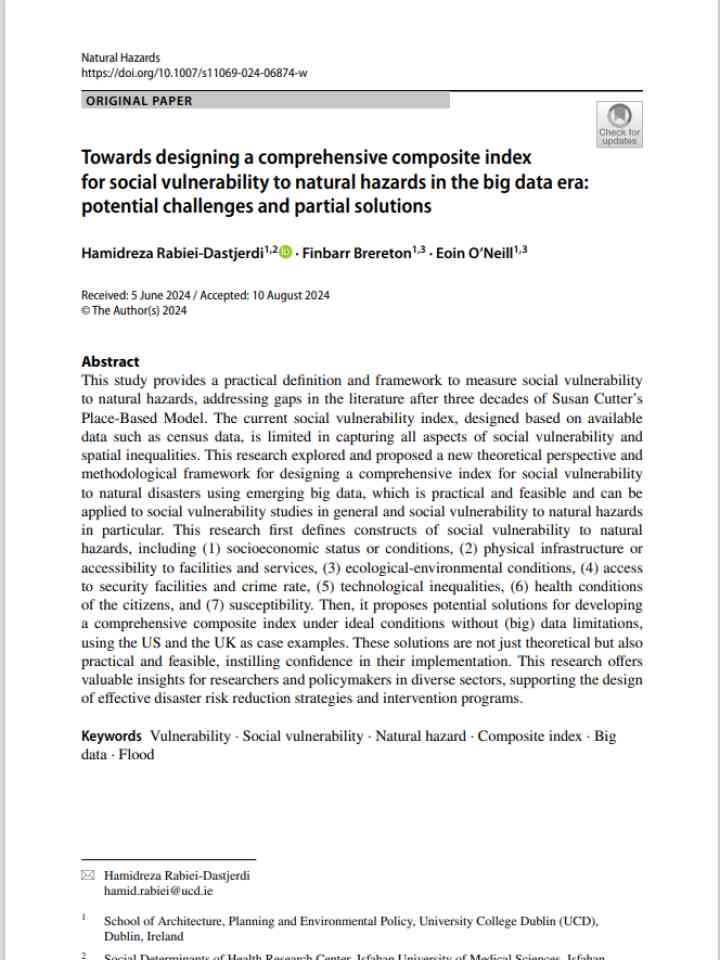Towards designing a comprehensive composite index for social vulnerability to natural hazards in the big data era: potential challenges and partial solutions
This study provides a practical definition and framework to measure social vulnerability to natural hazards, addressing gaps in the literature after three decades of Susan Cutter's Place-Based Model. The current social vulnerability index, designed based on available data such as census data, is limited in capturing all aspects of social vulnerability and spatial inequalities. This research explored and proposed a new theoretical perspective and methodological framework for designing a comprehensive index for social vulnerability to natural disasters using emerging big data, which is practical and feasible and can be applied to social vulnerability studies in general and social vulnerability to natural hazards in particular.
Key recommendations include:
- Integrate big data: leverage emerging big data sources to enhance the comprehensiveness of vulnerability assessments.
- Develop localized indices: create indices tailored to specific regions and their unique vulnerability profiles.
- Collaborate across sectors: foster collaboration among government, academia, and communities to effectively implement intervention programs.
Explore further
